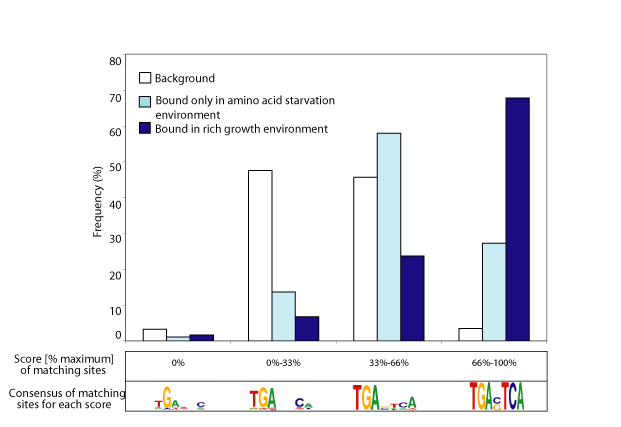
Discriminative Motifs
We note that in at least one case, we observe a qualitative difference in the apparent binding specificy of a regulator under two different growth conditions. The regulator Gcn4 binds to a subset of targets under conditions of rich growth, but binds to an expanded set of targets under conditions of amino acid starvation. We find that the Gcn4 sequence motif identified under rich conditions, TGACTCA, is highly enriched in the bound promoter regions. Promoter regions containing this binding site sequence are also bound under conditions of amino acid starvation, but in addition a statistically significant number of promoter regions that contain slight mismatches to this consensus are also bound. We suggest that increased levels of Gcn4 leads to a change in the sequence specificity required for Gcn4 binding. Such a mechanism may account for condition-specific binding observed by Gcn4.

Quality of Gcn4 binding sites among intergenic regions bound under different
conditions. Each intergenic
region was scored based on the quality of the best matching subsequence to the
Gcn4 binding specificity
(TGASTCA). In rich media conditions 68% of the intergenic regions contain high-quality
matches to the
Gcn4 specificity. Under starvation conditions the levels of Gcn4 protein rise,
and the set of bound
intergenic regions expands. Of the newly bound regions, only 27% contain high-quality
matches. By
contrast, only 3% of all intergenic regions contain matches of this quality.